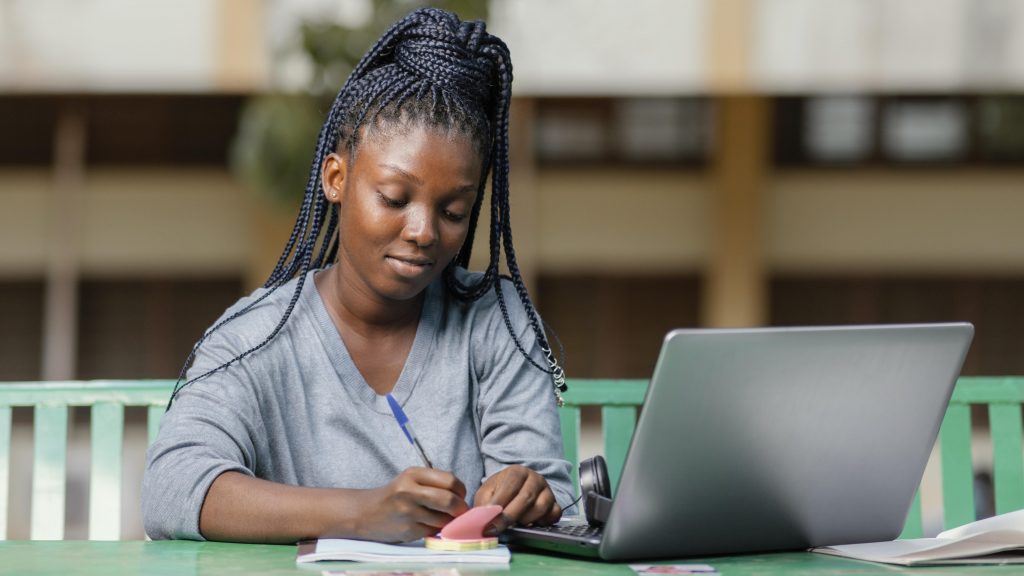In today’s connected world, access to education and opportunity begins with digital inclusion.
Imagine Amina, a bright, ambitious student in a rural village in Northern Uganda. She dreams of being an engineer. But in her current reality, her school lacks the resources for advanced learning. With no reliable internet connection or access to a digital device, there are few opportunities to explore her potential. Now, picture another reality – one where Amina has reliable access to the internet, a smart device, and online learning resources. She attends virtual STEM classes, joins global workshops, and connects with mentors and peers from around the world. With the right tools, her dream of becoming an engineer no longer feels distant; it feels possible.
This disparity highlights a critical truth: education and opportunity are increasingly tied to digital inclusion. Without meaningful connectivity, millions of students like Amina are left behind. But with it, the world opens up, making it possible for people to learn, invent, and succeed.
When education is combined with meaningful connectivity, digital literacy, and technological skills, something remarkable happens. Education becomes significantly more valuable in today’s digital age. Education isn’t merely a step toward digital inclusion. It is a fundamental right that, when combined with digital and technological skills, has an exponential impact on both economic and educational opportunities.

Why Digital Inclusion Matters in Education
For students in rural or underserved communities, digital inclusion is a vital bridge to education. When schools are remote, under-resourced, or disrupted, as seen during the COVID-19 pandemic, online learning becomes essential. Research by GDIP has shown that women with tertiary education are nearly twice as likely to have meaningful connectivity compared to those with less education. Rural women are three times more likely to lack internet access than urban dwellers. If women can break out of this cycle at any stage, whether it’s by getting better access to education or more meaningful connectivity, it has the possibility of accelerating their journey to meaningful participation in the digital economy. To address the barriers that many women face in becoming meaningfully connected and the subsequent impact this has on education, we outline four key areas that require crucial and concerted efforts to support women in the global majority’s improved access to quality education.
Breaking Barriers for Remote Learners
Consider a student in a mountainous region where the nearest school is many hours away. With meaningful connectivity, she can attend virtual classes, participate in global learning programmes, and even take university-level courses. In countries where gender disparities limit girls’ educational opportunities, digital tools make it possible to study safely from home. Students with disabilities can now use assistive technologies, making learning more inclusive.
Empowering Teachers and Schools
Digital inclusion benefits both students and teachers. Remote teachers can connect with global educator networks, receive training, and use innovative teaching methods in their classrooms. Schools with limited resources might use digital libraries, online labs, and educational platforms to supplement their students’ education.
Digital Inclusion as a Core Educational Priority
In today’s rapidly evolving world, governments must understand that digital inclusion goes far beyond simply putting devices in students’ hands. True digital inclusion means ensuring all students, regardless of socioeconomic status or geographical location, have meaningful access to the tools, connectivity, and learning environments that will help them succeed. This challenge is particularly acute given that, according to the ITU, only 38% of people in Africa and 66% of people in Asia have internet access, with many experiencing poor or unreliable connections even when connected. When done right, digital inclusion can transform education, enabling personalized learning and future-ready skill development, which opens doors to opportunities in digital economies. But access alone is not enough. Policies must address deeper systemic inequities to ensure that digital inclusion is not just a technological upgrade but a cornerstone of equitable and sustainable educational progress.
Building Digital Literacy into the Curriculum
Equally important to access is the ability to use technology effectively and responsibly. Digital literacy must be a core part of the curriculum at every level of education. Students need to learn how to navigate online environments, evaluate information critically, and create content that reflects both creativity and thoughtful analysis. This is particularly crucial for girls, who often face additional barriers to participating in technology fields. As noted in GDIP’s recent blog on coding and justice, “When girls learn to code, they’re not just gaining a technical skill—they’re acquiring a powerful voice in tomorrow’s world.” When these comprehensive digital skills are woven into everyday learning, students grow into confident digital citizens—equipped not just to adapt to the digital world, but to shape its future and ensure it reflects diverse perspectives and experiences.
The Path Forward
Digital inclusion isn’t just about technology; it’s about equity, opportunity, and the right to education. When students and teachers have meaningful connectivity, education becomes a powerful tool for empowerment and transformation. This understanding aligns with the RewirEd Global Declaration on Connectivity for Education, which emphasizes that connected technology must serve to advance inclusive education grounded in social and economic justice, equity, and fundamental human rights.
By investing in meaningful connectivity, we can unlock educational opportunities for millions. In doing so, we help build a world where every student, no matter where they live, can learn, grow, and realise their full potential.